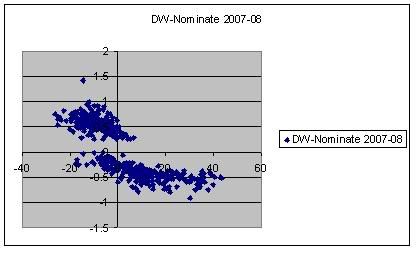• AR-Sen: I don’t know if this is outright shenanigans or innocent bureaucratic bungling, but a lot of eyebrows are being raised over a strange turn of events in Garland County that’s going to lead to long lines and voters avoiding the polls. The county, with a population of 80,000 and 42 precincts, will have a total of two polling places for the upcoming runoff election. Worth noting: Garland County (home of Hot Springs) is the most populous county in Arkansas that went for Bill Halter in the primary.
• IL-Sen: The Mark Kirk story seems like it’s finally catching hold in the Chicago market. At the link, you can check out the whole “misremembered it wrong” story splashed across the front page of the Chicago Sun-Times, and watch a withering WGN news story.
• WA-Sen: Dino Rossi has reported $600K in contributions in one week since announcing his bid. Anyone who is surprised by this number should get better acquainted with the term “low hanging fruit;” the interesting numbers will be the ones in future weeks to see how he does now that most of Washington’s major real estate and contracting players have, assumedly, maxed out. Also in the not-surprising file, state Sen. Don Benton dropped out of the race and endorsed Rossi. Benton was the more or less GOP frontrunner prior to Rossi’s entry, but also something of a Republican-establishment stand-in for Rossi with a lot of overlap in supporters, so there wasn’t much incentive for him to continue. Goldy correctly yawns at Benton’s departure, saying that Clint Didier (the Palin-endorsed teabagger in the race) was always the real speed bump for Rossi and one that’ll continue to pose a problem: he can’t run away from Didier and his supporters, whose enthusiasm he’ll need in November, but if he gets too close to them, he’ll lose whatever moderate image he once had, which he’ll also need in November.
• CA-Gov (pdf): The last pre-primary Field Poll, or at least part of it, is out. All that they’ve released today is the Republican gubernatorial primary numbers, which are very much in line with everyone else’s numbers lately. They see Meg Whitman leading Steve Poizner 51-25, only half the 49-point lead she had in the last Field Poll in March but still certainly enough to get the job done for her on Tuesday. Keep your eyes peeled for the rest of the data.
• NY-Gov: Maggie Haberman has an interesting retrospective of the big bag of Fail that was the Steve Levy campaign. She weaves together a number of threads that didn’t really make it into the national media — unwillingness to fully commit to the race, his reluctance to dip into his war chest, tabloid stories about law school friends — to paint a picture of a campaign that, in hindsight, was doomed from the outset.
• AR-03: Sarah Palin (and the Susan B. Anthony List) weighed in in AR-03, adding one more “Mama Grizzly” to her trophy room. She endorsed state Sen. Cecile Bledsoe, who’s in a runoff against Rogers mayor Steve Womack for the GOP nomination in the open seat race in this safely-red district. Bledsoe only compiled about 15% of the vote in the primary, although with a huge number of candidates, that was enough to squeak by into second place.
• NY-15: In case there was any doubt that a combination of age, sliminess, and having lost his Ways and Means gavel might prompt a last-minute retirement for Charles Rangel, they were laid to rest. He’ll be officially kicking off his next campaign this weekend.
• OH-18: The long-unresolved GOP primary in the 18th appears to be finally over, as former state Agriculture director and 2008 nominee Fred Dailey conceded. He lost to establishment pick state Sen. Bob Gibbs by 156 votes according to certified results, and the automatic recount only changed two votes. While this is one more in a string of recent GOP primaries where the establishment candidate beat the teabagger, this, like many of those races (like, say, IN-08 and IN-09, and IN-03 and IN-05 if you want to call the woeful Souder and Burton “establishment”) where the anti-establishment candidate came within a hair of winning, and where if there had been fewer teabagger candidates spoiling the broth or things that just bounced slightly differently, the media would be talking about an entirely different narrative.
• Media: So, speaking of media narratives, I’m wondering if the media are starting to dial down their “Dems are dooooomed!” narrative that’s been conventional wisdom for the last half a year. Not just because they may be noticing that the polling evidence for that is sketchy at best, but also, as this Newsweek piece points out, that they may have gotten suckered by the Democrats themselves, who seem to be engaged in the ages-old practices of expectations management, lowballing their predictions so they look like heroes later.
• Ideology: 538 has some fascinating charts up as part of a new post on where states (and where the two parties within each state) fit on the liberal/conservative scale, looking at it on multiple dimensions instead of on a left/right line. West Virginia (socially conservative and economically liberal) stands out as an interesting outlier on the chart, which does a lot to explain its particular brand of politics.
